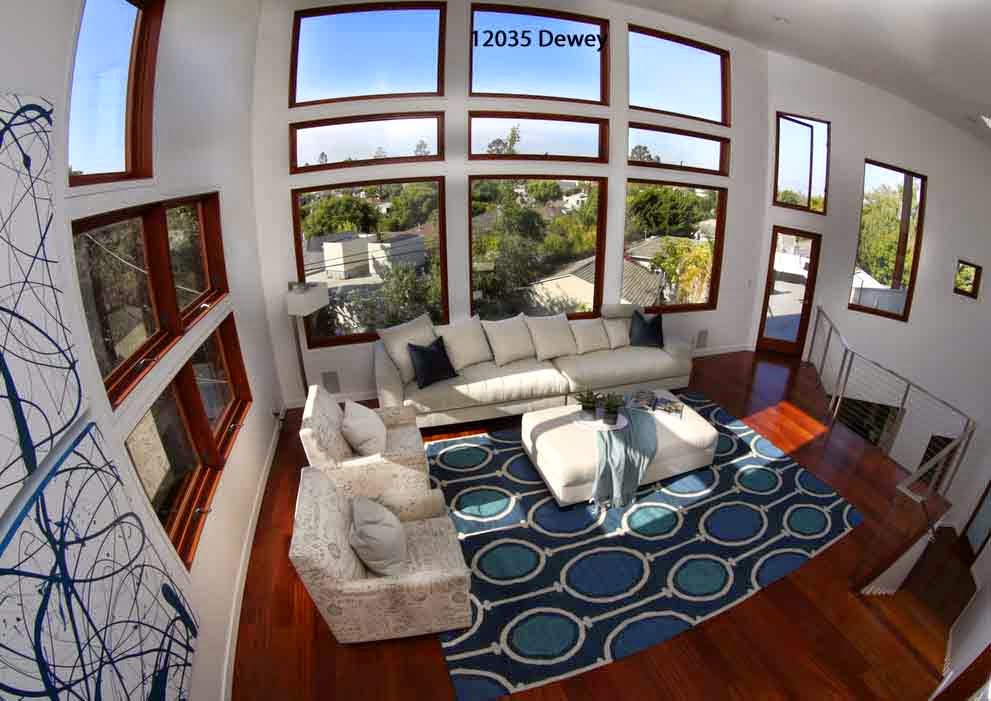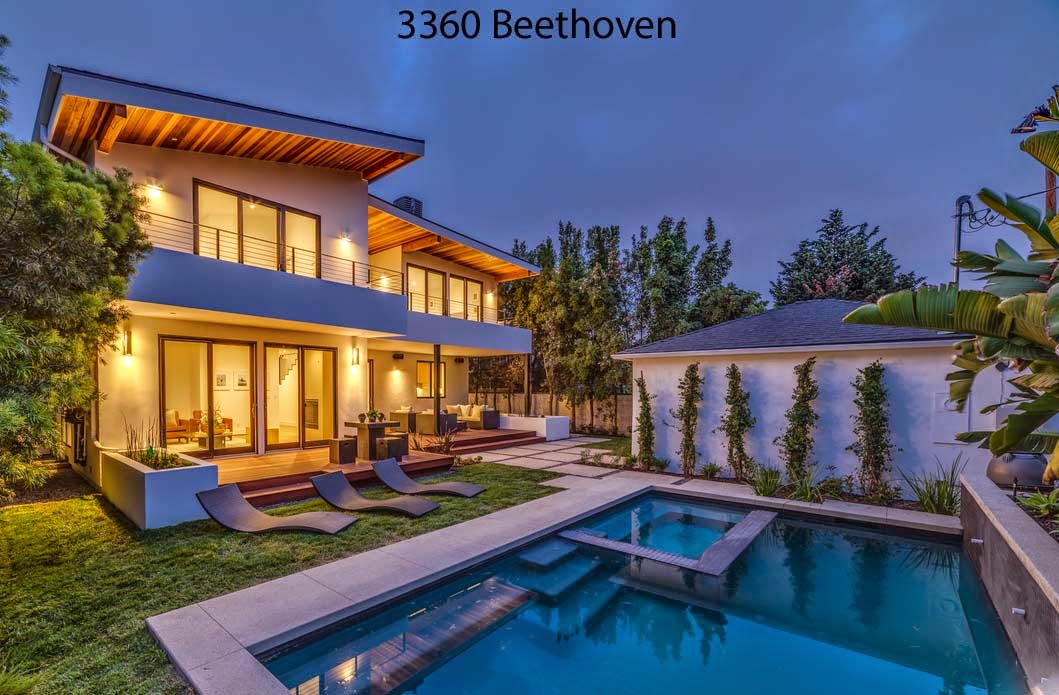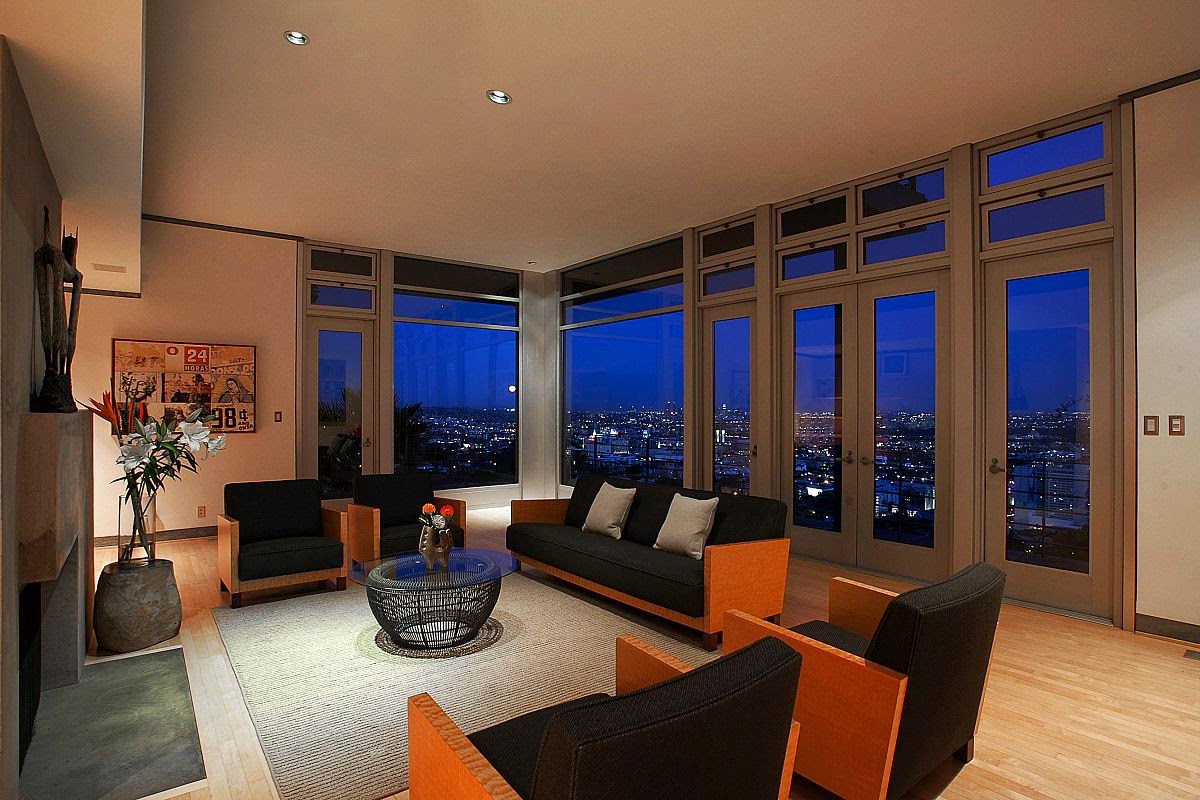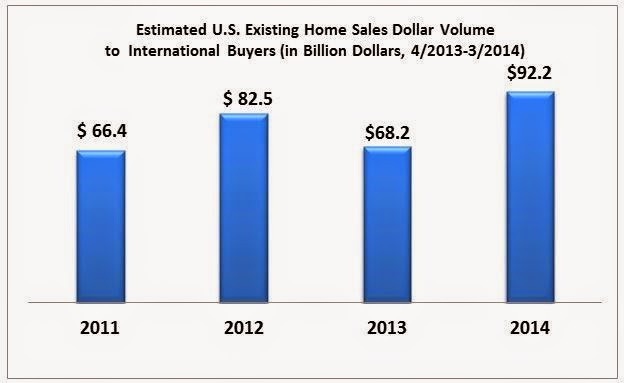Westside Market Trend Notes- Westchester HOT…market above $1.7M+ cooling a bit…lenders making it tough
Westside Market Trend Notes- Westchester hot…market $1.7M+ cooling a bit…Lenders making it tough…
– Tight inventory is still tilting the market in the seller’s favor but things slowed down a bit in July. Since most schools are starting the year early this could be a product of families traveling as we have seen buyer activity picking up this past week. In fact, traffic at open houses in Westchester, Culver City and Santa Monica was pretty strong on Sunday. One house in particular in Westchester had over 50 parties through in the first hour…

 – The market above 1.7M in Mar Vista and above $2M in Brentwood has slowed down and we have seen more reductions in listing prices compared to last quarter. In fact, a nice home like 12035 Dewey could possibly be had for around 1.9M and it is tough to find that combination of architecture and views under $2M. They have reduced $150K. A really nice remodel with a captivating view to the ocean at 3360 Beethoven went into escrow last week after a $100K reduction. . .they originally had multiple offers and the original buyer who was in for over asking walked away and opened escrow on a different but similar property in the area.
– The market above 1.7M in Mar Vista and above $2M in Brentwood has slowed down and we have seen more reductions in listing prices compared to last quarter. In fact, a nice home like 12035 Dewey could possibly be had for around 1.9M and it is tough to find that combination of architecture and views under $2M. They have reduced $150K. A really nice remodel with a captivating view to the ocean at 3360 Beethoven went into escrow last week after a $100K reduction. . .they originally had multiple offers and the original buyer who was in for over asking walked away and opened escrow on a different but similar property in the area.
– With Mar Vista and South Santa Monica to the north and Manhattan Beach and El Segundo to the south seeing such strong price appreciation over the past 24 months, buyers around the $900-1.1M mark are focusing on Westchester and neighboring areas of Playa Del Rey. They are finding great family friendly pockets like Kentwood and Loyola Village. I feel Westchester is a strong long-term investment choice especially with the expansion of the Playa Vista project providing more amenities and the availability of charter schools popping up in the area. The large builder/flip companies like Thomas James Capital and Anchor Homes are both aggressively pursuing homes in the area.
– If you are going through a re-finance or purchase, you already know the amount of paperwork and detail the lenders are asking for is extremely detailed. The lenders cut back on staff during the great recession and have not re-hired making the process longer and frustrating for all involved. The good news is we have well-qualified buyers during this recent run up in pricing. However, it can be extremely frustrating and time consuming when going through the process. Be Prepared!
Feel free to contact me directly at 310-486-5962 if you need any assistance or have some real estate related questions. Make it a great day!
Today’s Luxury Homes Must Haves
What makes a home truly luxurious? Today’s builders are constantly adapting to the needs of future homeowners, staying ahead of design trends but also considering the larger questions of what types of homes will meet the demands of our ever-changing world.
In many ways, true luxury defies definition. There are certain determining factors such as the latest in smart home technology or the best high-end finishes, but what truly takes a home to the next level is both more simple and more complex. What do my friends feel like when they come into my home? Do I have art walls? A comfortable environment?”
The biggest key is the importance of “micro-environments” within the home — picture-perfect settings throughout today’s luxury homes, vignettes that draw the eye and bring a sigh of delight. Here in Los Angeles we prize indoor/outdoor spaces. Smart homes with command centers that can be accessed remotely are increasingly popular because they provide a combination of security and comfort that resonates with today’s buyer.
What makes the best view in Los Angeles? The Partners Trust View Criteria
Los Angeles is a city built on views. The abundant hillsides and valleys make for plenty of opportunities to view the surrounding landscape all the way to the Pacific Ocean. There are, however, views that stand out from the rest–views that are peerless in their expansiveness and beauty. These are the views that are talked about, whispered about, and shown off by proud property owners who proclaim that they have “the best view” around.
What really makes a view extraordinary? Intrigued by claims of hearing about the “Best view in Los Angeles” for years without a true measuring rod for comparison, Partners Trust decided to create a grading criteria to better define the ultimate bragging rights within the City of Angels.
Based on six core criteria with a grading scale from 1-10, the average of those six scores reveals where the property fits on the overall scale. With a grade of one being a modestly desirable view and ten representing the small handful of top-tier properties in Los Angeles that offer a truly extraordinary vantage point, we can now start to better articulate who may actually claim that their view represents the “Best of Los Angeles”.
The Partners Trust View Standard Criteria:
 Explosiveness—Explosiveness is defined as the ‘wow’ factor, the type of jaw-dropping view that offers both height and breadth with an expansive vista showcasing the city. A panoramic expanse along the lines of a 270-degree view would warrant a 9 or 10 on our scale. However, unsightly obstructions like power lines or poles would cause a reduction in points. Massive ocean views can also be considered as explosive provided that they are dramatic and wide-ranging however in our opinion, they won’t receive as high a rating as the staggering city lights view because these views go “dark” at night. The best views dazzle by day and by night.
Explosiveness—Explosiveness is defined as the ‘wow’ factor, the type of jaw-dropping view that offers both height and breadth with an expansive vista showcasing the city. A panoramic expanse along the lines of a 270-degree view would warrant a 9 or 10 on our scale. However, unsightly obstructions like power lines or poles would cause a reduction in points. Massive ocean views can also be considered as explosive provided that they are dramatic and wide-ranging however in our opinion, they won’t receive as high a rating as the staggering city lights view because these views go “dark” at night. The best views dazzle by day and by night.
Texture—Texture can be described as a type of softness, a gradation of local hillsides, light and shadow, and differing vantage points that add character to a view. The view from a tall building or hillside property can be explosive but still lack the type of texture t
hat makes a view pleasing at all times of day or night. A view that is both explosive and textured creates tremendous view enhancement and must be awarded points on our scale.
Exclusivity—Does the property offer relief from the street? Is it accessed via a private drive or through a set of gates? Does it occupy a promontory or other spot that is not accessible to others? The longer the drive and the more unique and rare the view, the more points it receives in this category. The more exclusive the view, the higher the ranking and if no one else can claim the same vantage point then you can add 10 points to your score.
Proximity—An ideal view property also offers reasonable proximity to civilization. If there are many switchbacks up a twisting, narrow road, miles to travel, and a level of inaccessibility, points are to be deducted against the view’s ultimate dynamic composition. No one wants to drive a long distance for the proverbial quart of milk. If you can get easy access to your convenience store without burning through much gas, rank your property accordingly.
Iconography—Los Angeles is a town defined by both its natural beauty and its landmarks. The ideal view should include as many of these landmarks as possible: the Hollywood sign, the Griffith Observatory, Dodger Stadium, the downtown Los Angeles skyline, and the Capitol Records tower. The view should also extend all the way to the Pacific Ocean. If you can pick up 10 iconic “Hollywood” landmarks in your view, go ahead and give yourself a 10 in this category.
Privacy—Does the property offer the utmost in privacy? Are there houses nearby at the same height? Is it easy for someone to look in the windows or observe you on the deck, balcony or lawn? Is anyone looking down onto the property? The ideal view property is one that offers complete protection from prying eyes. If your view affords a “paparazzi-proof” vantage point, go ahead and tack on another “10” on our scale.

 To illustrate the use of this scale, Nick Segal applies it to The Gary Johns House on Los Tilos Road (pictured) in the Hollywood Hills. This property defines what makes a stellar view on the Partners Trust scale. It has jaw-dropping views that sweep from the city to the ocean (10 points) and yet it also offers exposure to softer, more intimate hillside vistas (9 points). It is situated on a promontory accessed via a long private drive (10 points). It is located in an area that offers relatively easy access to the city (8 points). The city’s landmarks can be easily pointed out in the view (10 points) and the property is beautifully situated so that residents can enjoy the views with limited access to voyeurism (7 points). Tallying our score, The Gary Johns House delivers a score total of 54 for an average “9” on the Partners Trust View Standard.
To illustrate the use of this scale, Nick Segal applies it to The Gary Johns House on Los Tilos Road (pictured) in the Hollywood Hills. This property defines what makes a stellar view on the Partners Trust scale. It has jaw-dropping views that sweep from the city to the ocean (10 points) and yet it also offers exposure to softer, more intimate hillside vistas (9 points). It is situated on a promontory accessed via a long private drive (10 points). It is located in an area that offers relatively easy access to the city (8 points). The city’s landmarks can be easily pointed out in the view (10 points) and the property is beautifully situated so that residents can enjoy the views with limited access to voyeurism (7 points). Tallying our score, The Gary Johns House delivers a score total of 54 for an average “9” on the Partners Trust View Standard.
-Source- Partners Trust Voice Blog
Partners Trust Acquires Malibu Firm
Partners Trust Real Estate Brokerage & Acquisitions in Beverly Hills purchased Arete Estates, a Malibu firm specializing in high-end real estate. The purchase price was not disclosed.
 Partners Trust was founded in 2009 by a five-person partnership. The company has some 200 associates and annual sales of greater than $1.7 billion. Arete Estates’ nine employees will join the bigger firm and Arete will take the Partners Trust name.
Partners Trust was founded in 2009 by a five-person partnership. The company has some 200 associates and annual sales of greater than $1.7 billion. Arete Estates’ nine employees will join the bigger firm and Arete will take the Partners Trust name.
(Source: Los Angeles Business Journal)
Foreign Buyer Activity Hotter Than Ever
A record amount of foreign money is flowing into the U.S. housing market. And the Southland is a prime destination. Overseas buyers and new immigrants accounted for $92 billion worth of home purchases in the U.S. in the 12 months ended in March. That’s up 35% from the year before, and the most ever.
Nearly one-fourth of those purchases came from Chinese buyers with a 55% increase in total purchase compared to last year. And the place they’re looking most is Southern California. Among U.S. cities, Los Angeles was the top destination for real estate searches from China, San Francisco was second; followed by Irvine.
Some families are buying houses for their children attending California universities, or even high schools in some top districts. Others see the U.S. as a smarter investment than the overheated Chinese housing market.
“These are famous cities they know,” said Liu, an immigrant from China who is a realtor and estimates that half her business now comes from Chinese buyers. “They know San Francisco. They know Los Angeles. They know Irvine.” Good schools certainly help. Liu said many of her clients are families with children, planning to immigrate to the U.S. and looking for a top-ranked school district. And the high-cost Chinese housing market means that even neighborhoods in the U.S. where the median price is pushing $900,000 can look like a steal.
Not just Asians- The weather of Southern California appeals to Europeans; the glamour to buyers from Russia; and the economic stability to Latin Americans looking for a haven.
“The world has really opened its eyes to California,” he said.
Still, he noted, these global elite are only active in a certain slice of the market. And while that may keep driving up prices at the high end, it probably won’t make much difference to the average first-time home-buyer in a middle-class neighborhood.
Still, he noted, these global elite are only active in a certain slice of the market. And while that may keep driving up prices at the high end, it probably won’t make much difference to the average first-time home-buyer in a middle-class neighborhood.
Sources- LA Times/Calculated Risk Blog
Understanding Debt to income ratio…A very important factor when qualifying for a home loan
Since they are so important to a successful mortgage application, here’s a quick overview on what goes into DTIs and why they are such a big red flag. Debt-to-income ratios for home loans are the most direct indication to a bank about whether you are going to be able to afford to repay the money you want to borrow.
Debt ratios for home loans have two components.
The first measures your gross income from all sources before taxes against your proposed monthly housing expenses, including the principal, interest, taxes and insurance that you’d be paying if the lender granted the mortgage you sought.
As a general target, lenders like to see your housing expense ratio come in at no higher than 28% of gross monthly income, though there is flexibility to go higher if other elements of your application are viewed as strong. In May, Freddie Mac and Fannie Mae had a housing expense ratio of 22%. Federal Housing Administration-approved borrowers had average housing expense ratios of 28%.
The second DTI component — the so-called back-end ratio — measures your income against all your recurring monthly debts. These include housing expenses, credit cards, student loans, personal loan payments and others. Under federal “qualified mortgage” standards that took effect in January, your back-end ratio maximum generally is 43%, though again there is wiggle room case by case.
Most lenders making loans eligible for sale to Fannie or Freddie prefer not to see you anywhere close to 43%. In May, according to Ellie Mae, the average approved home purchase applicant had a back-end ratio of 34%. Even at FHA, which tends to be more lenient on credit matters than Fannie or Freddie, the average back-end ratio for buyers was 41%. The average for denied applications was 47%.
A good place to learn more about DTIs and to compute your own is Fannie Mae’s consumer-friendly “know your options” site (www.knowyouroptions.com), which includes calculators and other helpful tools.
Also, most lenders want to see FICO scores well above 700 — Fannie and Freddie averages were in the 755 range in May; FHA average approved scores were a more generous 684.
Bottom line here: If you want to be successful in your mortgage application, be aware of these key turnoff points for lenders and take steps to avoid the tripwires.
(source: Washington Post Writers Group)



